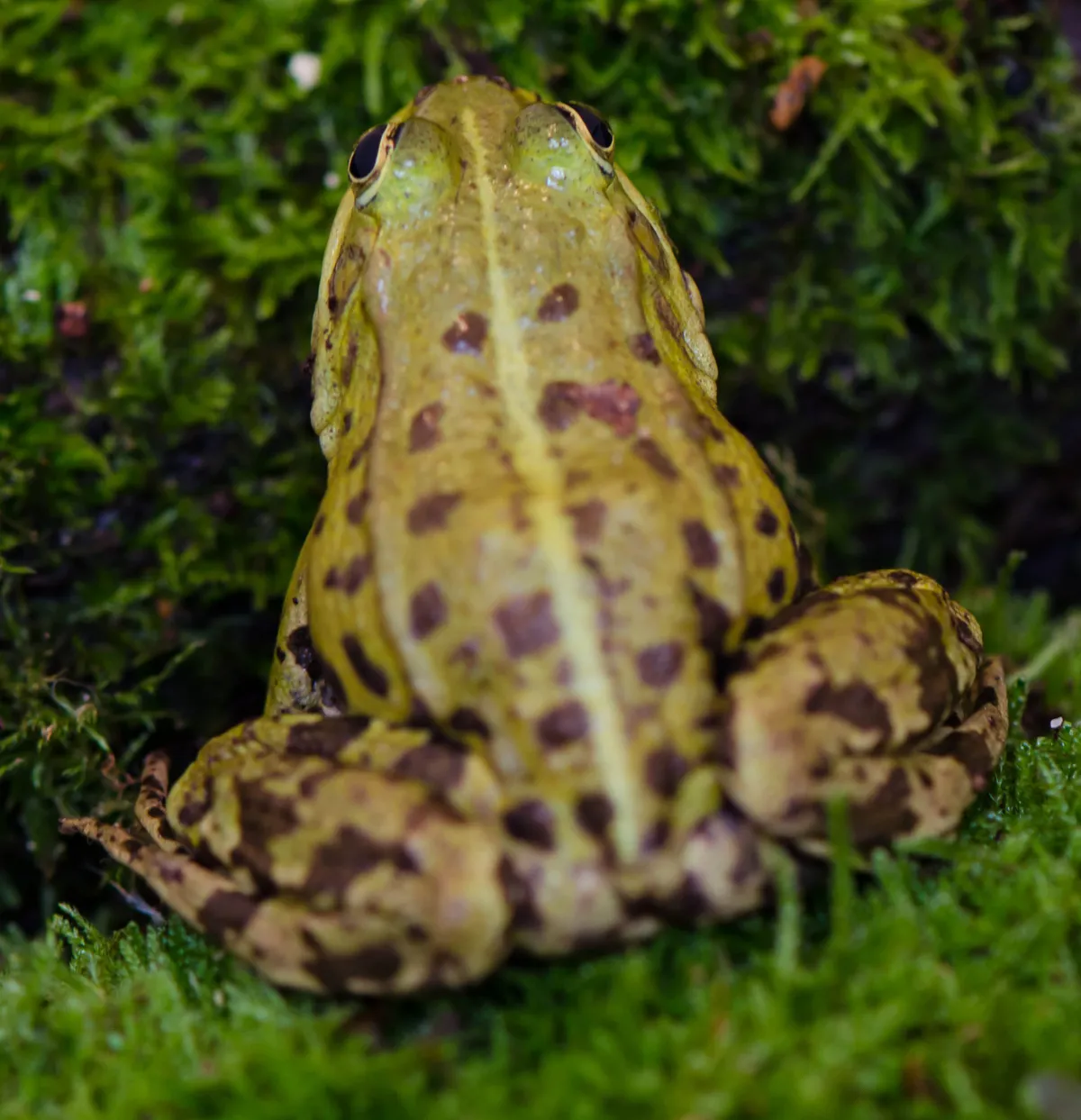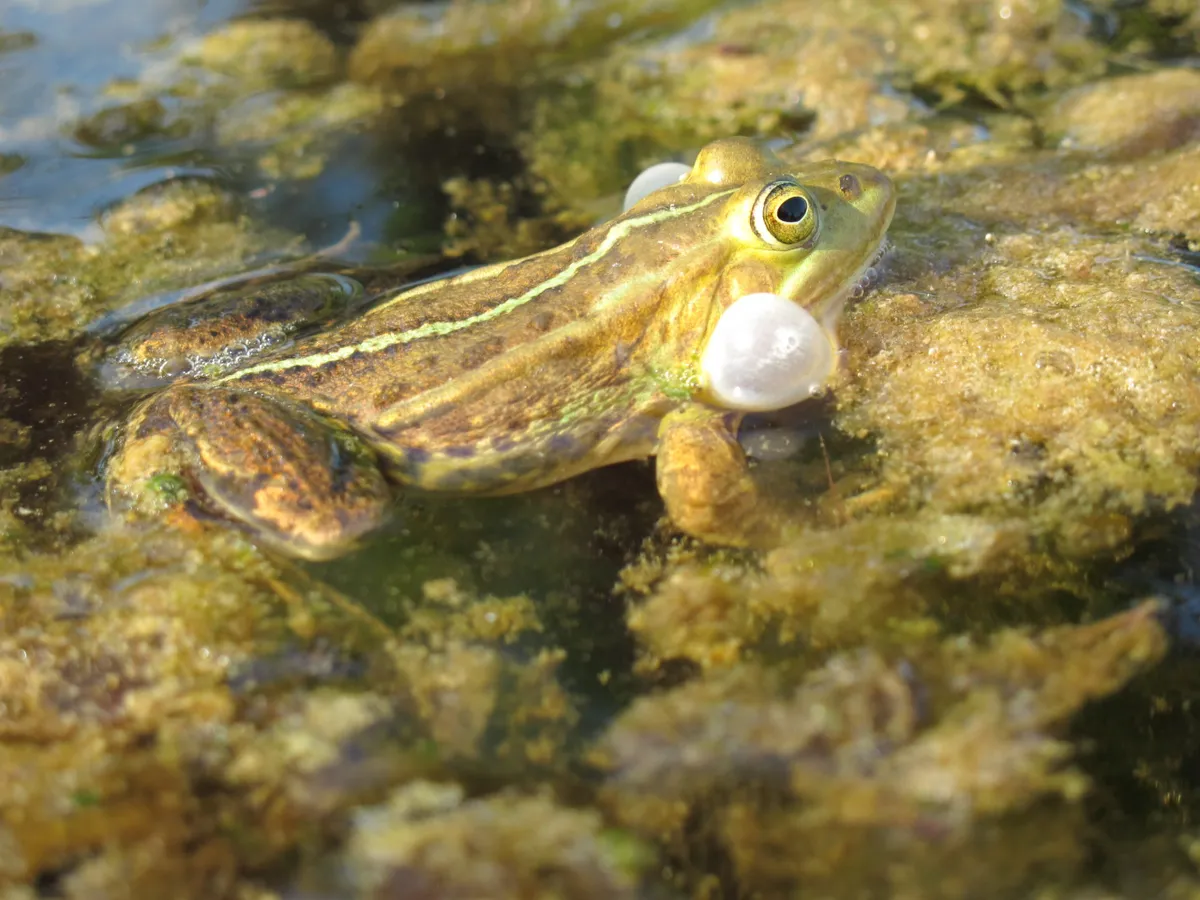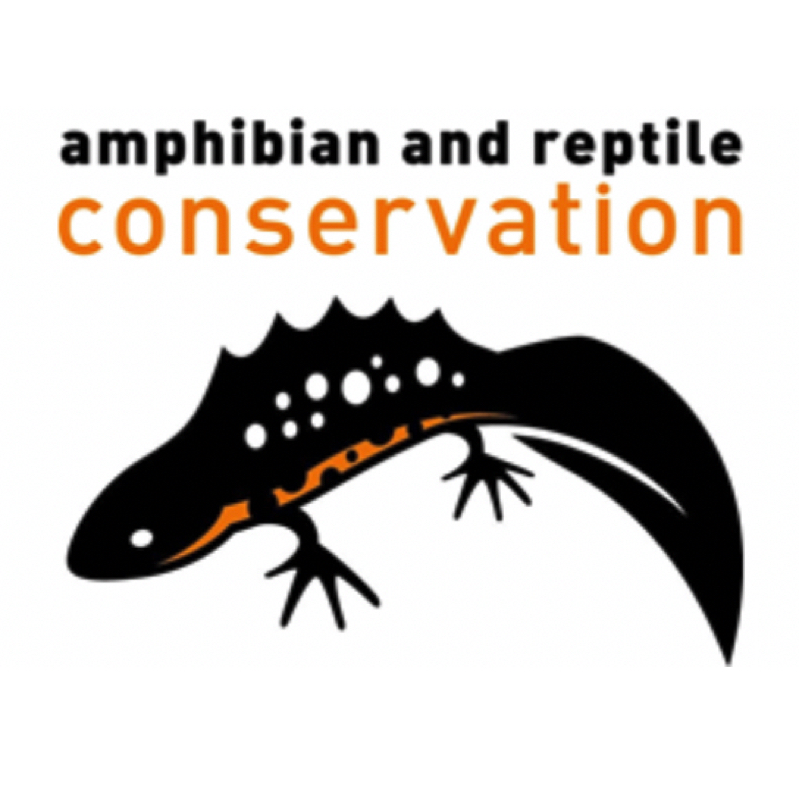Learn about the northern pool frog, usually just called pool frog in the UK, including how to identify them and what their call sounds like, in our expert guide by the Amphibian and Reptile Conservation Trust (ARC).
What is the scientific name of the northern pool frog?
The scientific name of the northern pool frog is Pelophylax lessonae. The Pelophylax genus contains the green frogs, also known as water frogs, including the marsh frog, a species that was introduced into the UK in the 1930s. The edible frog (Pelophylax kl. esculentus) is a fertile hybrid of the pool and marsh frog.
It was formerly called Rana lessonae, and was in the same genus as the common frog (Rana temporaria), but research showed that the green frogs are distinct from the Rana genus. Taxonomic research into the green frogs is still ongoing, and further splitting may occur.
Where do northern pool frogs live?
Our rarest species of native amphibian, the northern pool frog only occurs in the breckland area of East Anglia, and in a small number of other northern European countries (Sweden, Finland, Norway and Estonia).
This is in strong contrast to their more widespread relative, the southern pool frog that occurs throughout a large region of central, southern and eastern Europe into Russia.
How to identify northern pool frogs
Northern pool frogs are predominantly brown in colour with darker blotches, and a light yellow or green stripe along the back.
They are similar in size to common frogs, and as with that species, male pool frogs are slightly smaller than female pool frogs. Pool frogs also have more pointed heads and longer legs than common frogs.

What do northern pool frogs sound like?
Male northern pool frogs have a loud mating call generated by a pair of white inflatable pouches (vocal sacs) each side of the head; common frogs lack this feature.
Pool frogs call around May-June, and the call is a loud noise similar to a duck quacking, while common frogs call in February-March and their call is more of a quiet, rasping purr.

What do northern pool frogs eat?
Adult pool frogs eat a wide variety of invertebrates including flying insects which they can jump up to catch. Their tadpoles forage on algae, tiny invertebrates and decaying material in the pond.
What eats northern pool frogs?
Predators of adult and juvenile pool frogs include grass snakes, herons and otters. Pool frogspawn and tadpoles are food to aquatic predators including water beetles, dragonflies and damselflies.
Do northern pool frogs lay eggs?
Pool frogs breed later in the year than common frogs, coinciding with warm weather in May and June. The spawn clumps are small, about the size of a ping pong ball and the individual eggs are brown above and pale below.
The eggs hatch within five days and the tadpoles grow rapidly, before emerging from ponds as froglets from late July to September.
Do northern pool frogs hibernate ?
Yes, pool frogs hibernate between around October and April. There is much we still have to learn about pool frog ecology, including where they prefer to spend the winter months.
Are northern pool frogs endangered?
Northern pool frogs occur as small populations, and have a very restricted distribution within the five northern European countries where they occur. Some populations are declining. Even where they are stable, their limited distribution and abundance renders this species vulnerable to the impact of chance events such as severe weather or amphibian disease.
In the UK, our last remaining pool frog colony at Thompson Common in Norfolk was considered officially extinct by 1995. Unfortunately, the species was not understood to be native to England until the mid 1990s, just as it disappeared.
Please note that external videos may contain ads:
Pool frog. © Jack Perks Photography
The research evidence confirming the native status of northern pool frogs in England included pool frog bones from mid-Saxon times, records documenting the pool frog’s presence in England prior to any known frog introductions and studies on their genetics and mating calls.
In the mid-2000s, a team of conservationists led by the Amphibian and Reptile Conservation Trust and Natural England reintroduced pool frogs to England following a thorough assessment.
What threats do northern pool frogs face?
In the UK, pool frog numbers dropped dramatically during the 19th and 20th centuries as a result of loss and damage to their fenland and breckland habitats, through drainage, agricultural intensification and water pollution.
Even in the special places where the species has been reintroduced to its native East Anglia, and where habitats are managed to help pool frogs thrive, their small populations remain vulnerable to chance weather events or the introduction of amphibian disease.
What is being done to help northern pool frogs?
In 2005, Natural England and ARC started a four-year reintroduction project to bring these beautiful frogs back to their last known home county in England. After meticulous planning, pool frogs were collected and imported under licence from Sweden before being carefully released into suitable habitat in Norfolk.
Ever since then, ARC has worked with a range of partners including Natural England, Forestry Commission, Norfolk Wildlife Trust and Anglian Water to monitor the growth of the population at the original reintroduction site and work towards restoring pool frogs across their historic native range. The reintroduction has been supported by wildlife veterinary health experts at Institute of Zoology.
In 2015, pool frogs were reintroduced to a second English site, by transferring individuals from the population that had been established at the first reintroduction site, as part of the Breaking New Ground Landscape Partnership Scheme for Norfolk and Suffolk Brecks. The site chosen was Thompson Common, a Norfolk Wildlife Trust reserve, that was the species’ last known breeding site before its UK extinction.
Thompson Common is a Site of Special Scientific Interest (SSSI). It not only supports pool frogs, but is home to a biodiverse range of flora and fauna including 19 different types of dragonfly, 25 species of butterfly and over 600 species of beetle.
In 2019, ARC gave pool frog tadpoles a “head-start. The team at ARC collected pool frog spawn from the wild and moved it to a bio-secure unit where the tadpoles were able to grow in a predator free environment.
Please note that external videos may contain ads:
Pool frog head-starting project. © ARC
When the tadpoles were big enough, they were released into ponds at Thompson Common. ARC continues to work with partners to realise the ambition of returning the northern clade pool frog to its historic native range in England.
Amphibian and Reptile Conservation Trust (ARC) is a wildlife charity committed to conserving amphibians and reptiles, and saving the disappearing habitats on which they depend.
Main image: Pool frog. © J Foster/ARC
